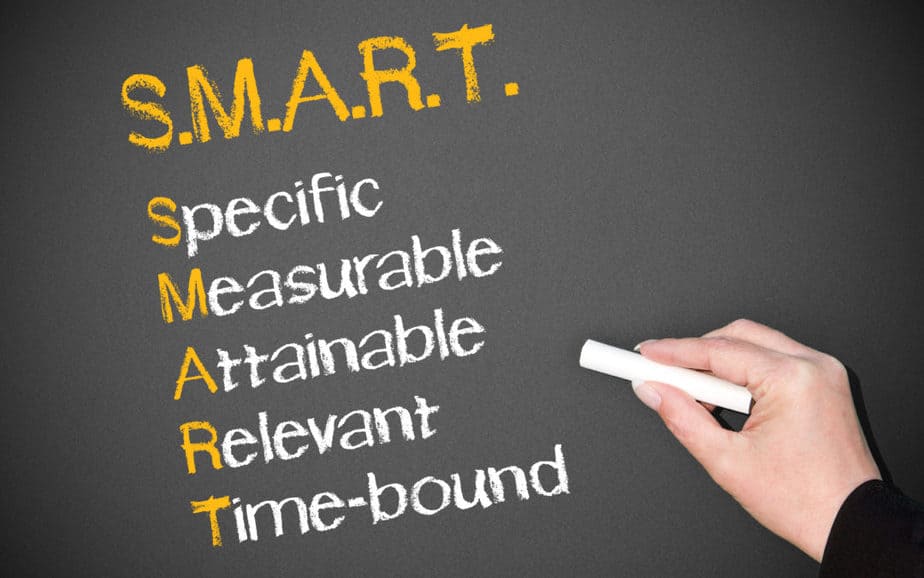‘Tis the Season for Goal-Setting: Tips and Tricks for Setting Successful Goals
New year, new me. At least, that’s what we hope to accomplish. However, it can be so difficult to maintain those changes we wish to make. For this week, we will be discussing and reviewing some basic tips regarding how to make smart goals and keep them. Several of these ideas you have likely heard before. If so, hopefully a brief reminder will be beneficial to you as you approach 2019.
The acronym SMART Goals is commonly taught in schools as a guideline for effective goal-setting. I’ve been taught many strategies for goal-setting throughout my life, and this has made the most sense. Even if you’ve learned this strategy before, it’s may be a good time to review it as you seek to make and accomplish New Year’s resolutions.
Specific
As you ponder which goals you hope to accomplish, be sure to make them specific. Often when setting resolutions, we say things like “I’m going to lose some weight” or “I’m going to be more productive with my time” but what does this really mean? How much weight do you want to lose? What are you going to be more productive with? It’s critical to consider such questions when setting a goal. If the goal is too broad, you’ll have a difficult time knowing how to accomplish it.
Measurable
You’ll find that the different parts of this acronym are well connected to each other. The “M” in SMART stands for measurable. This step suggests that your goal must have a visible destination. For example, saying that you want to lose 30 pounds by the end of the year is much more effective than saying that you simply want to lose weight. Give yourself a numerical value to work toward. Another example would be if you wanted to be more productive by spending three hours every day working on a project beyond what is expected of you. When your goal is measurable, you’ll be much more motivated to accomplish it and will be able to better analyze your progress.
Attainable
This step is extremely important to remember. Goals are meant to push us, get us out of our comfort zone. But we should be aware of our limits. For example, I love to read and so each year I set a goal as to how many books I would like to read by the end of the year. In 2018 I was able to read 55, which I was extremely happy with. In order to push myself, my goal this year is to read 60, five more than last year. This is an attainable goal for me, though it does still push my limits. If I were to set a goal of 100 books, however, that would likely not be attainable at this point in my life. Particularly considering I am still a stressed-out college student, I know I don’t have the time to read 100 books. Be aware of your circumstances and limits and make goals accordingly.
Relevant
Some people identify the “R” as standing for “Realistic” which is pretty similar to “Attainable.” For that reason, we will say that “R” stands for “Relevant.” This simply means that you must be sure you are setting goals that make sense based on your current circumstances. Recognize that there are some things that more attention than others. For example, say you’re overwhelmed with school and are struggling to maintain good grades. In this situation, it may be more important to set a goal for how you plan to do better in school rather than setting a goal for, say, how many free-throws you’ll be able to make in a row. Again, be aware of your limits and circumstances before you jump into goal-setting.
Time
The final step is simply about giving yourself a time limit of some kind. For New Year’s resolutions, your time limit may simply be to finish by the end of the year, but the goal may take more time than that. It also may only take a few months, weeks, or days. Consider how long you plan to put your plans into action and when you would like to have accomplished your goal. This will keep you focused and motivated.
And Plan, Plan, Plan!
Once you’ve made a goal that meets the above criteria, be sure to consider smaller objectives you hope to accomplish as you work toward your overall goal. For example, if you hope to be able to run a marathon, start running a longer and longer distance each day in order to ensure you’ll be able to run a marathon when the time comes. Making these plans is critical to the success of your ability to reach your goal.
As a final note, be sure to recognize that falling short is part of life. Don’t quit just because you missed one day of running or you gave into your cravings for a single meal. When you fall down, get up and try again! If you expect perfection or nothing, you will never be able to experience the joy that comes with success following a difficult journey. Learn to love the experience of working towards a goal as much as you love successfully attaining it. Good luck, and happy New Year!

